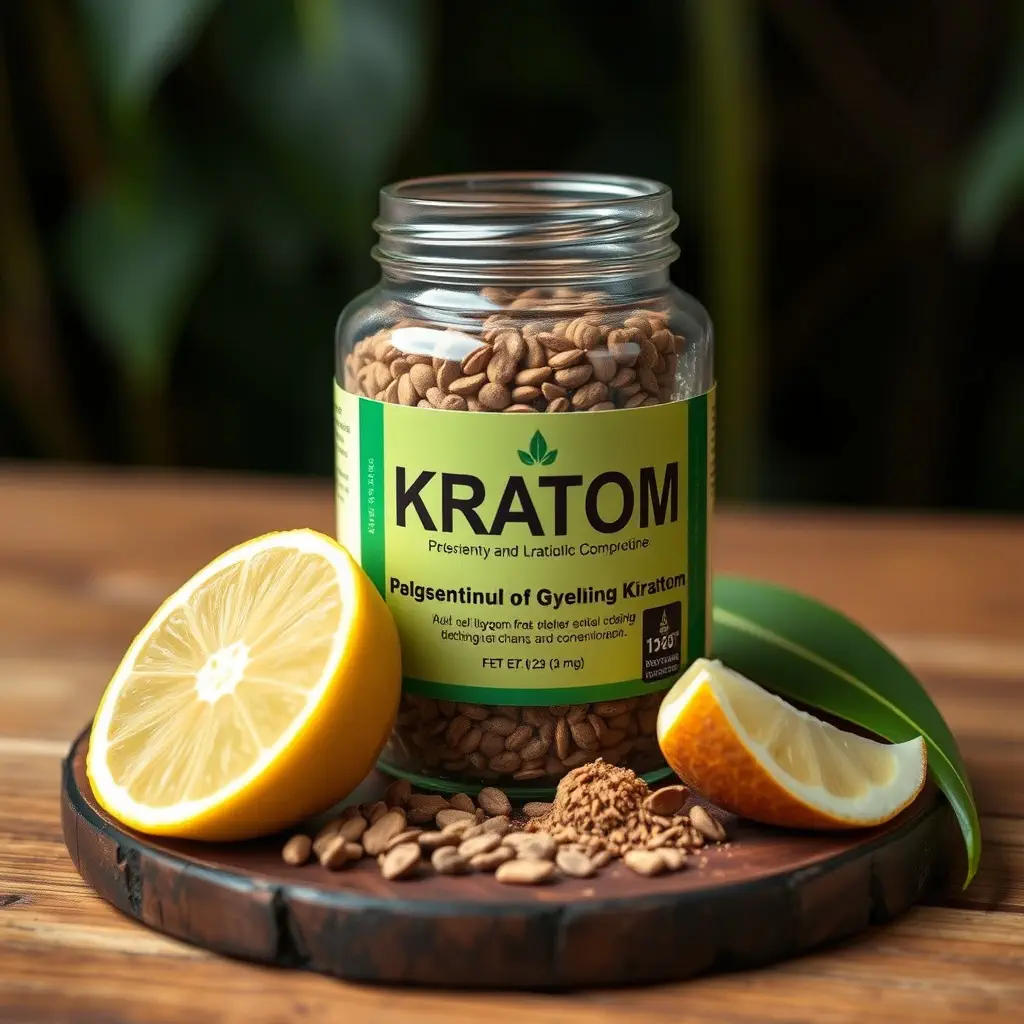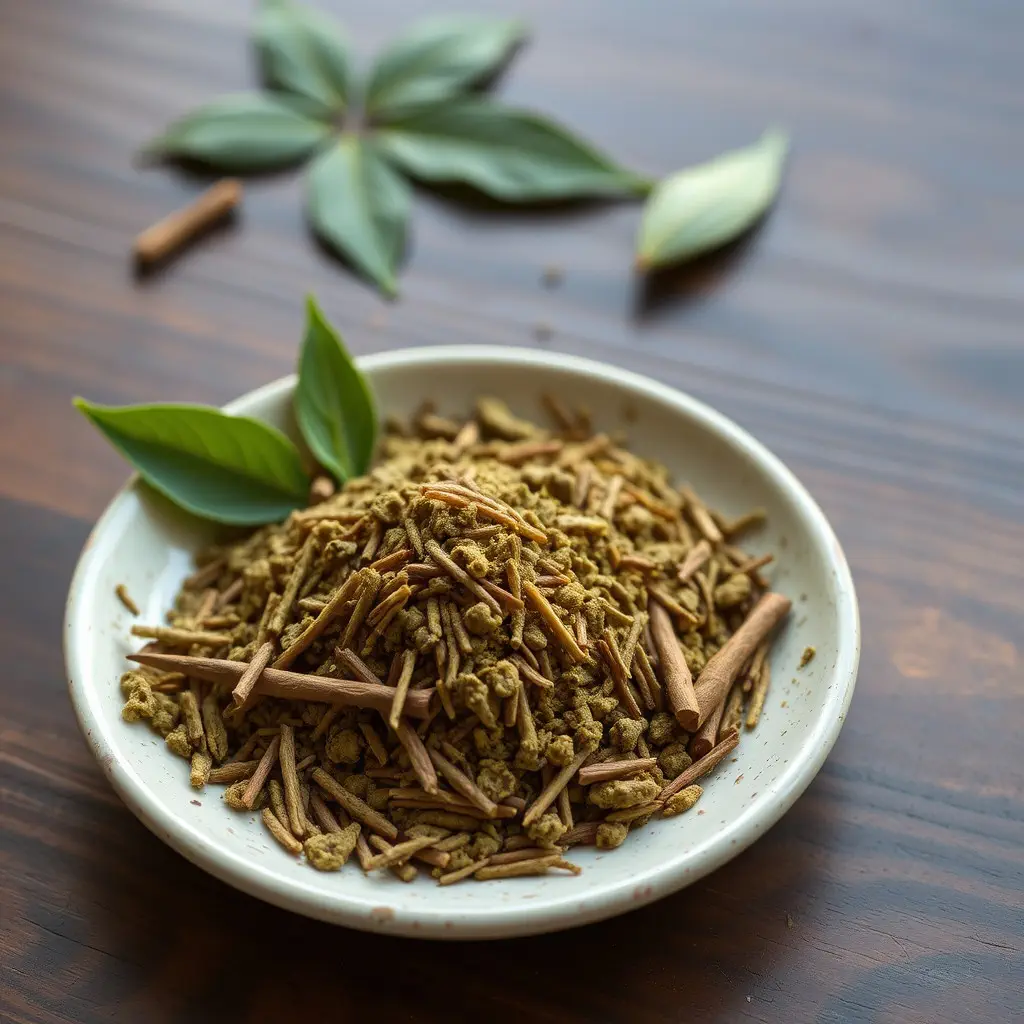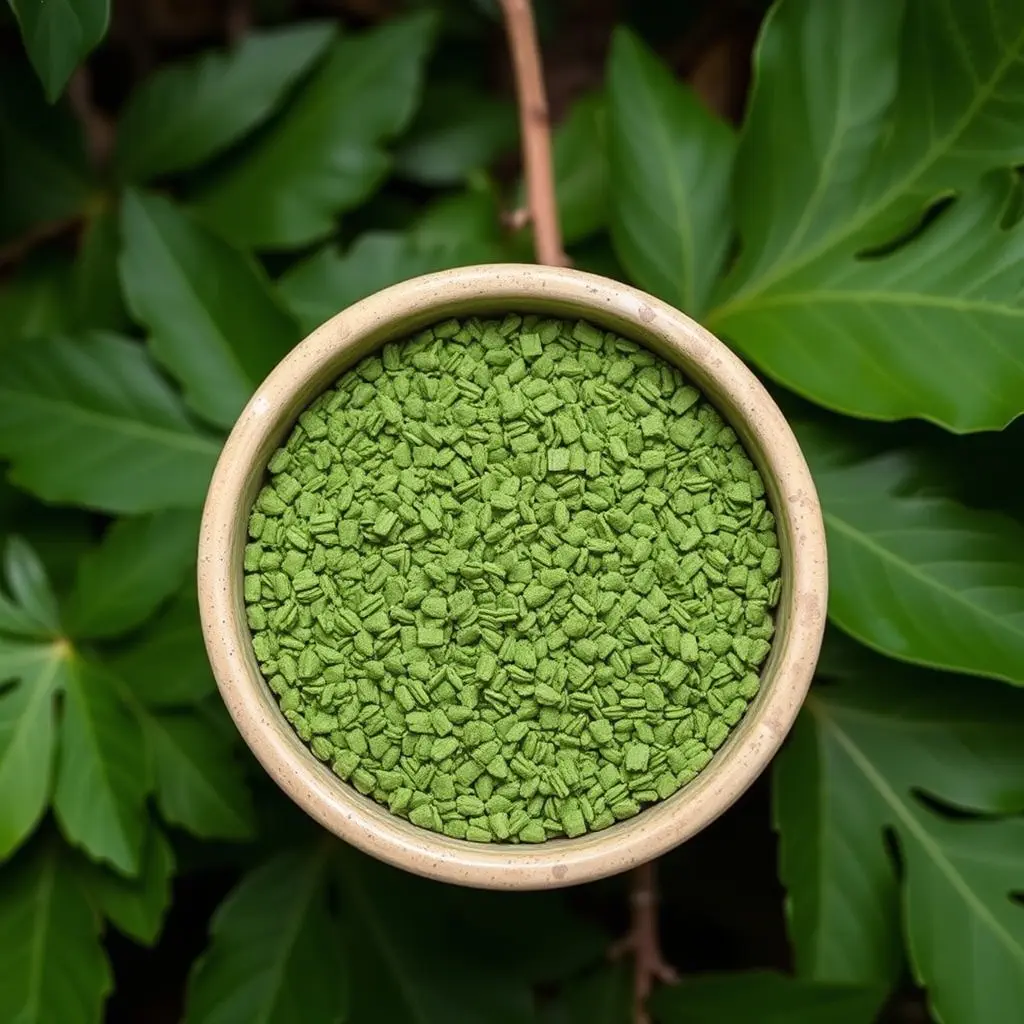Mitragyna speciosa, commonly known as kratom, has garnered attention for its potential benefits in post-training recovery, particularly due to its alkaloids mitraphylline and 7-hydroxmitragynine, which offer analgesic effects by interacting with opioid receptors. These properties could be advantageous for athletes seeking natural pain relief without overreliance on prescription painkillers or NSAIDs. Additionally, kratom has mood-enhancing and energy-boosting effects that may aid in returning to peak performance. Kanna Fermented, a traditional African herb (Sceletium tortuosum), also shows promise as a natural supplement due to its anti-inflammatory and analgesic properties, attributed to enhanced alkaloids resulting from fermentation. It interacts with neurotransmitters like serotonin and norepinephrine, offering pain relief and mood elevation. Both kratom and Kanna Fermented can be integrated into post-exercise routines to potentially shorten recovery periods, improve athletic performance, and provide a synergistic effect for overall well-being. However, users should consult healthcare professionals before incorporating these substances into their regimen due to regulatory status and potential interactions with other medications. A balanced recovery strategy that includes kratom or Kanna Fermented, along with proper nutrition, hydration, rest, and a holistic approach, can optimize post-workout healing.
Kratom, derived from the Mitragyna speciosa tree, has garnered attention in athletic circles for its potential in promoting training recovery. This article delves into the alkaloids within kratom that may aid in muscle soreness relief and how traditional preparations, such as kanna fermented extracts, can be incorporated into post-workout routines. We’ll explore the scientific backing of these claims, offer guidance on safe and effective integration, and provide insights into maintaining optimal recovery. Join us as we navigate the complexities of using kratom to enhance your athletic performance and recovery process.
- Unraveling the Potential of Kratom for Enhanced Training Recovery: A Closer Look at Mitragyna Speciosa's Alkaloids
- Kanna Fermented: Exploring Traditional Preparations and Their Impact on Athletic Muscle Soreness Relief
- Integrating Kratom into Your Post-Workout Routine Safely and Effectively for Optimal Recovery
Unraveling the Potential of Kratom for Enhanced Training Recovery: A Closer Look at Mitragyna Speciosa's Alkaloids

Mitragyna speciosa, commonly known as kratom, has garnered attention in various health and wellness spheres due to its potential benefits for recovery, particularly following intense training sessions. The leaves of this tropical tree contain a complex array of alkaloids, with mitraphylline and 7-hydroxmitragynine often highlighted for their analgesic properties. These compounds are believed to interact with the body’s opioid receptors, offering pain relief that can be instrumental in recovery processes. Additionally, kratom may enhance mood and energy levels, which can be crucial for athletes and trainers looking to bounce back from strenuous activity without overreliance on prescription painkillers or non-steroidal anti-inflammatory drugs (NSAIDs).
Furthermore, the synergistic effects of kratom’s alkaloids may contribute to reduced inflammation and faster muscle recovery. The fermented kanna extract, another natural compound gaining traction in wellness circles, is also noted for its anti-inflammatory properties and could potentially be combined with kratom for a more comprehensive approach to post-training recovery. This combination might offer a dual-action response that not only manages pain but also supports the body’s natural healing mechanisms, leading to improved overall well-being and performance readiness for subsequent training sessions. Users are encouraged to consult healthcare professionals before incorporating kratom into their recovery regimen, especially considering its regulatory status and potential interactions with other medications.
Kanna Fermented: Exploring Traditional Preparations and Their Impact on Athletic Muscle Soreness Relief

Kanna Fermented, a traditional African herb also known as Sceletium tortuosum, has been used for centuries by indigenous peoples for its mood-enhancing and pain-relieving properties. Modern research has begun to explore the potential of Kanna Fermented in addressing athletic muscle soreness, a common challenge for both amateur and professional athletes. The fermentation process enhances the alkaloids within Kanna, such as sceletium tortuosum, which are believed to interact with neurotransmitters like serotonin and norepinephrine, thereby contributing to pain relief and mood elevation. This unique preparation offers a natural alternative to synthetic analgesics, which can be particularly advantageous for athletes seeking recovery aids that align with their wellness and performance goals. Studies have shown that incorporating Kanna Fermented into post-exercise routines may alleviate muscle soreness, potentially reducing recovery time and enhancing athletic performance.
Furthermore, the traditional preparations of Kanna Fermented often involve drying the plant and then either fermenting it or chewing the dried leaves. These methods have been passed down through generations and are now being scientifically evaluated for their efficacy in pain management and muscle soreness relief. The impact of these preparations is thought to be due to the alkaloids’ ability to modulate the nervous system, offering both analgesic and anxiolytic effects. As such, Kanna Fermented stands as a promising herbal supplement for athletes looking to incorporate a natural remedy into their recovery regimen, with its traditional preparations providing a rich historical context that adds depth to its contemporary use in sports science and medicine.
Integrating Kratom into Your Post-Workout Routine Safely and Effectively for Optimal Recovery
Integrating Kratom into your post-workout routine can be a beneficial strategy for promoting recovery, provided it is done with caution and an understanding of its effects. Kratom, derived from the leaves of the Mitragyna speciosa tree, contains alkaloids that may support the body’s natural healing processes after intense physical activity. To safely incorporate Kratom into your recovery regimen, start by consulting with a healthcare professional to determine the appropriate dosage and strain for your specific needs. The most commonly used strains for recovery are those high in 7-hydroxymitragynine, such as Bali or Indo strains, which are known for their analgesic properties. It’s also crucial to consider the method of consumption; while traditional leaf consumption is possible, fermented kratom extracts like Kanna Fermented offer a more concentrated form that can provide a consistent and controlled dose. These extracts are often preferred due to their potency and efficiency. When using Kratom post-workout, monitor your body’s response carefully. Pay attention to how you feel in terms of pain management, energy levels, and overall well-being. Adjusting the dosage up or down based on individual sensitivity will ensure that you are not overdoing it, which could lead to adverse effects. Additionally, pairing Kratom with proper hydration, nutrition, and rest will enhance its effectiveness for optimal recovery and prepare your body for the next workout. Always prioritize a balanced approach to post-workout care that includes Kratom as one component of a holistic healing process.
Incorporating kratom into one’s post-workout routine, particularly through preparations like kanna fermented extracts, may offer a promising avenue for enhancing training recovery. The alkaloids present in kratom have been the subject of intriguing scientific investigation, suggesting their potential role in mitigating muscle soreness and promoting a more efficient recovery process. While further research is warranted to fully understand the efficacy and safety profiles of kratom use among athletes, preliminary findings are optimistic. It is crucial for individuals considering this approach to do so under informed guidance, ensuring proper dosage and integration with other recovery strategies for optimal results. As such, those interested in the benefits of kanna fermented and its role in athletic recovery should proceed with caution, mindful of the regulatory status and potential interactions with other substances.






